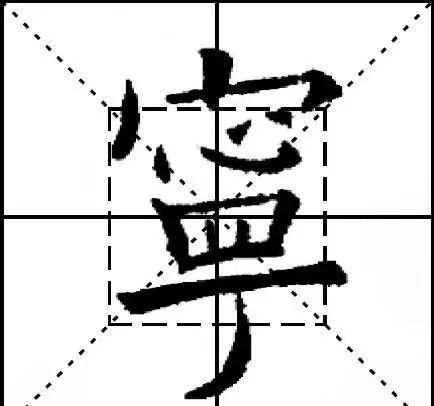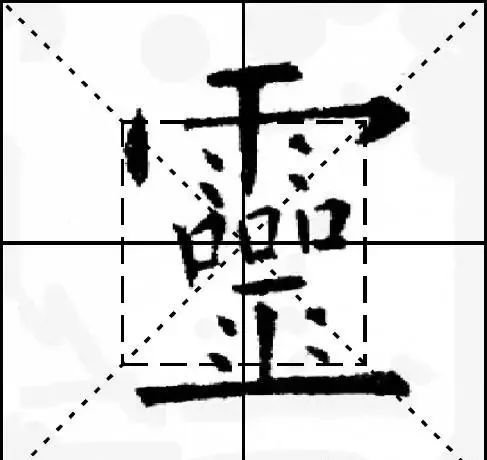(16): Repeat risk
【original】
The characters that are bigger above the top will be covered with the characters below, such as "Yun" head, "Xue", "宀", "Rong" head, "Luxury", "Gold", "Shi", "夅", " "Alley", "Tai" and the like.
【Original meaning】
Some characters with a top-bottom structure should be written larger at the top to cover the lower part, so that they appear stable, such as "云" (头), "Xun", "宀", "龙" (头), "luxury" , "Gold", "Shi", "夅", "Xiang", "Tai", etc.
【New Theory】
The upper part is wide and spread, which is called overcapao, and can protect against wind and rain. The lower part is tightened to find the center of gravity, the upper part is stretched like an umbrella cover, and the lower part is contracted to keep out the rain. The complex and risky part does not mean that the upper part is heavier than the upper part. Generally speaking, the radical cannot be the main body of the character, so the complex and risky part must be arranged in conjunction with the main part and must not take over the main part. Covering is somewhat similar to covering. Some coverings are large and some are small. The emphasis is not on "covering" but on "appropriateness". The covering must be able to "cover". It might be better to swap the words between the two.
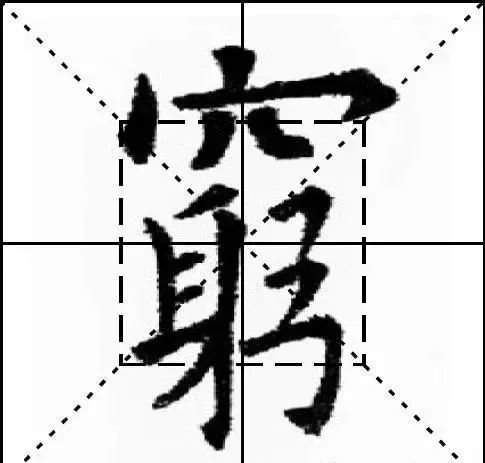
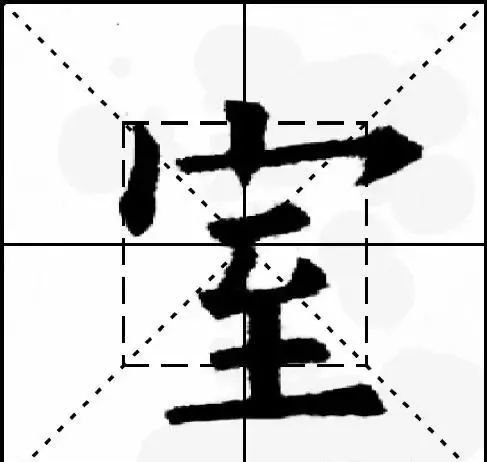
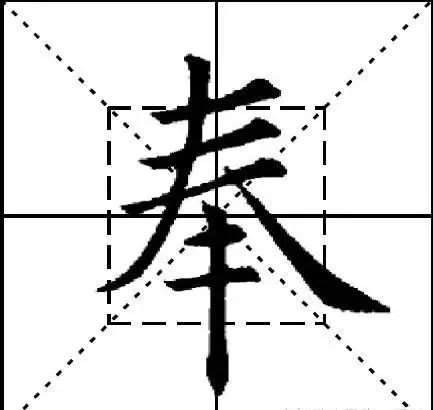
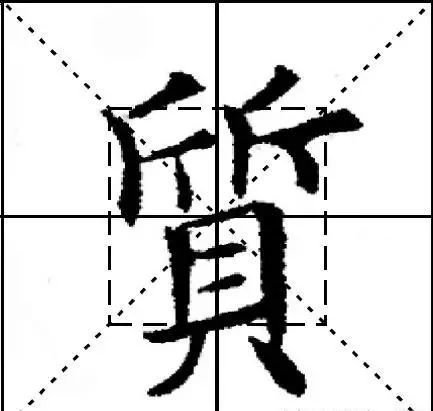
(17): hanging
【original】
Hanging like "du", "xiang", "qing", "mao", "夅" and so on, dragging like "water", "branch", "qian", "pi", "geng", "辶", "Zuo", "min", "ye" and the like are also used.
【Original meaning】
"Cui" means that the last stroke of the character is made to hang down, which makes the stipple painting have a downward trend, such as "Du", "Xiang", "Qing", "Mao", "夅", etc. "Yè" (yè) means dragging, pulling, and refers to the last stroke of a word dragging diagonally downward.
Such as "water", "branch", "qian", "pi", "geng", "辶", "walk", "min", "ye", etc. The last stroke of these words should be kept at an appropriate length, and should not be written too long or too long, which will destroy the balance of the center of gravity of the words.
【New Theory】
"Cui" is a combination of two single-meaning characters. "Cui" is a vertical stroke, mostly vertical, and "Yu" is a drag-like stroke, mostly "捺". The "hanging" strokes are mostly the main strokes. One stroke determines the outcome, has momentum and a sense of power, and determines the success or failure of the entire character. Because it is the main pen, its position, thickness, length and other postures are particularly important, so pay special attention to it.
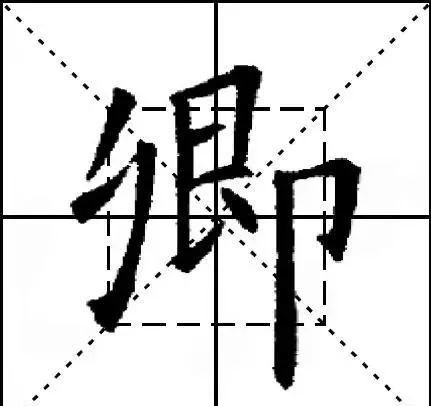
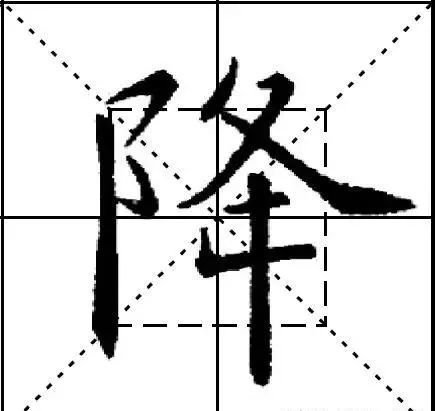
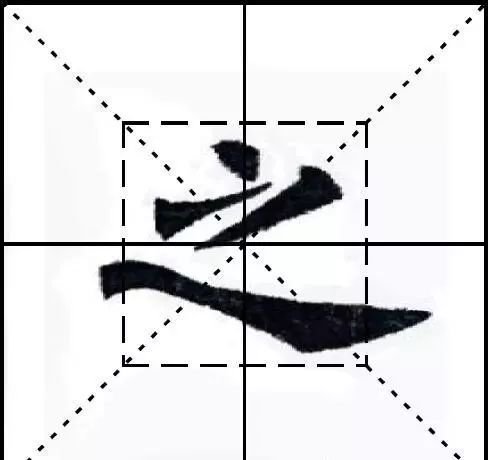
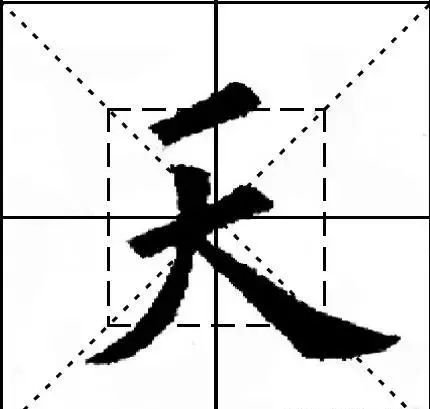
(18): Borrow and exchange
【original】
For example, in "Liquan Ming", the word "mi" is on the right point of the word "shi", and the left point of the word "bi" is made by borrowing and replacing it. Another example is the word "ling", which may be written as "gang" or "小" in the Dharma post, which is also borrowed and exchanged. Another example is "Su" as "蓓", "Qiu" as "秌", "Goose" as "鞞", or (the bird above me, the bird below me) as "(the bird above me, the bird below)" and so on. The characters are difficult to form, so they can be interchanged like this. They are also borrowed and exchanged. The so-called east reflects the west.
【Original meaning】
Some Chinese characters often change the radicals appropriately, or change the upper, lower, left and right positions of the radicals or even the structure, such as "mi (secret)", the left side of which was originally next to the word "shi", when writing "shi" The right dot next to the word is written as the left dot of the word "bi" so that they do not conflict with each other. This is a borrowing and substitution ("mi" is actually the original character for "mi"), and today people call it a variant. Another example is "ling", the lower part is often written as "gang", or simplified as "小", which is also a borrowing and exchange. In "Huang Ting Jing", "Su" is written as "蓓", "Qiu" is written as "秌", and "Goose" is written as "鞞" (the left-right structure becomes an up-down structure). It is difficult to form the structure of this type of characters, so this method is adopted to make the structure more beautiful.
【New Theory】
By converting the strokes or parts of the characters into other strokes or parts, or changing the relative positions of the parts of the characters in a multi-part structure, the structure is more beautiful.
